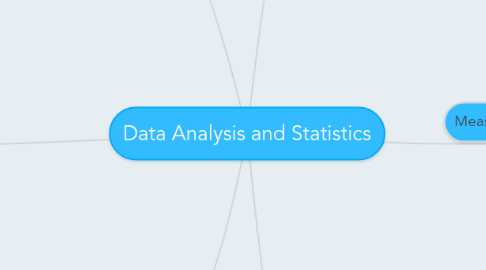
1. Sampling Distribution
1.1. Simple Random Sample
1.1.1. Members are chosen using a method that gives everyone an equal chance of being picked
1.2. Systematic Sample
1.2.1. Members are chosen using a pattern
1.3. Stratified Sample
1.3.1. Population is divided into groups and members are chosen randomly from each group
1.4. Cluster Sample
1.4.1. The population is divided into groups and whole groups are randomly chosen and surveyed
1.5. Convenience Sample
1.5.1. Individuals are chosen because they are easily accessible
1.6. Self-Selected Sample
1.6.1. Members volunteer to participate in the survey
1.7. Probability Sample
1.7.1. A sample where every member of the population has a nonzero chance of being selected
1.7.2. Examples of these are simple random, systematic, stratified, and cluster samples
1.7.3. Examples of non-probability samples are convenience and self-selected samples
1.8. Margin of Error
1.8.1. Defines the interval the sample percentage may differ from the real one
2. Data Gathering
2.1. Population
2.1.1. The entire group of people that you want to know about
2.2. Census
2.2.1. Survey of the entire population
2.3. Sample
2.3.1. Random Sample
2.3.1.1. A sample where every member of the population has an equal chance of being selected
2.3.2. Biased Sample
2.3.2.1. A sample where members may be self-selected or chosen based on convenience
2.4. Parameter
2.4.1. Number that describes a population
2.5. Statistic
2.5.1. Number that describes a sample
3. Binomial Distributions
3.1. Binomial Theorem
3.1.1. A formula for finding any power of a binomial without multiplying at length
3.2. Pascal's Triangle
3.2.1. 1 1 1 1 2 1 1 3 3 1
3.3. Binomial Experiment
3.3.1. Consists of so many independent trial whose outcomes are either successes or failures
3.3.2. The probability for success (p) is the same for each trial, the probability for failure (q) also stays the same in each trial
3.3.2.1. p + q = 1 or q = 1 - p
3.4. Binomial Probability
3.4.1. The chance that a binomial experiment will result in exactly a certain amount of successes
4. Significance of Experimental Results
4.1. Hypothesis testing
4.1.1. Used to determine whether the difference in two groups is caused by chance
4.1.2. Calculates how many ways one result can occur
4.2. Null hypothesis
4.2.1. States that there is no difference between the two groups that are tested
4.2.2. The null hypothesis is often the reverse of what the experimenter believes so they are trying to disprove it
5. Measures of Central Tendencies
5.1. Mean
5.1.1. The average of all numbers in the data
5.2. Median
5.2.1. The middle of all numbers in the data
5.3. Mode
5.3.1. Most frequently occurring number or numbers in the data
5.4. Expected Value
5.4.1. The weighted average of each of the possible outcomes
5.5. Box and Whisker Plots
5.5.1. Minimum
5.5.1.1. Lowest value in the data
5.5.2. First Quartile
5.5.2.1. Median of the lower half of the data
5.5.3. Third Quartile
5.5.3.1. Median of the upper half of the data
5.5.4. Maximum
5.5.4.1. Largest value in the data
5.5.5. Interquartile Range
5.5.5.1. The difference between the first and third quartiles
5.6. Variance
5.6.1. Average of the squared differences of the mean
5.7. Standard Deviation
5.7.1. Square root of the variance
5.8. Outlier
5.8.1. Value that is much greater or less than all other values
6. Surveys, Experiments and Observational Studies
6.1. Experiment
6.1.1. Puts a treatment on individuals and collects data on how they respond to the treatment.
6.1.2. Controlled Experiment
6.1.2.1. Two groups are studied under conditions that are identical except for one varaible
6.1.2.2. The treatment group receives the treatment
6.1.2.3. Control group is used for comparison and doesn't have the treatment
6.1.3. Randomized Comparative Experiment
6.1.3.1. Individuals assigned to the treatment and control group are picked at random
6.2. Observational Study
6.2.1. Observes individuals and collects data without affecting anything

